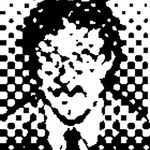Color separating for T-shirts
Copy link to clipboard
Copied
So I have a very complex illustration in six colors, and all the various components are built in layers. Now that it's time to color separate the art with trapping, what's the best way to turn all the dozens of layers into six layers, one per color? Is it the shape builder tool?
Explore related tutorials & articles
Copy link to clipboard
Copied
From what you describe I think I'd select one of the objects that has one of the six colors. Then choose Object > Select > Same Fill Color. Once you have all objects of the same color selected, put them on their own layer. Repeat for each of the six colors.
Copy link to clipboard
Copied
Barbara, please. Even with two simple overlapping shapes, that method would instantly fail.
Copy link to clipboard
Copied
Did you try Pathfinder Trap? To trap a document the colours do not need to be on their own layer.
Copy link to clipboard
Copied
Pathfinder Trap will prove useful once everything's on its own color layer, but the main issue is getting all the white on the white layer (etc) and subtracting from those shapes any shape that overlaps it. I know it sounds like basic Pathfinder stuff, but again, it's a highly complex design with dozens of layers. Your head would explode if you tried using Pathfinder one shape at a time. The Shape Builder method is working out okay, but I still am having to work through the design one component at a time, or else it takes too long to process between passes.
Copy link to clipboard
Copied
When you select all and choose Trap from the Pathfinder fly-out menu, it traps everything (except gradients) without having to move any object to another layer.
Copy link to clipboard
Copied
KrisHunt schrieb:
Pathfinder Trap will prove useful once everything's on its own color layer, but the main issue is getting all the white on the white layer (etc) and subtracting from those shapes any shape that overlaps it. I know it sounds like basic Pathfinder stuff, but again, it's a highly complex design with dozens of layers. Your head would explode if you tried using Pathfinder one shape at a time. The Shape Builder method is working out okay, but I still am having to work through the design one component at a time, or else it takes too long to process between passes.
Selecting all and then Pathfinder > Merge will make it flat. Each object will be a neighbour, no more overlaps. But is this useful for trapping? See jdanek's response.
Copy link to clipboard
Copied
A good trade shop will separate the file for you using their equipment which should include in-RIP trapping. Are you separating the file to print your own films?
Copy link to clipboard
Copied
I hand separate and trap Illustrator artwork to produce film positives for silkscreening binders every day.
It's really nearly impossible to assist you with your project without seeing the illustration in question. I'd need to see how the colors overlap, as well as the colors used to determine what order the inks will go down so that we can then figure out what needs to trap to what.
For the record - jdanek is super correct - contacting the silkscreener would be the first step in determining how they want the file to be set up (and to determine if you even need to be worrying about this at all).
And, I can't resist mentioning that a very complex illustration built in six colors might not be a great candidate for silkscreening.


